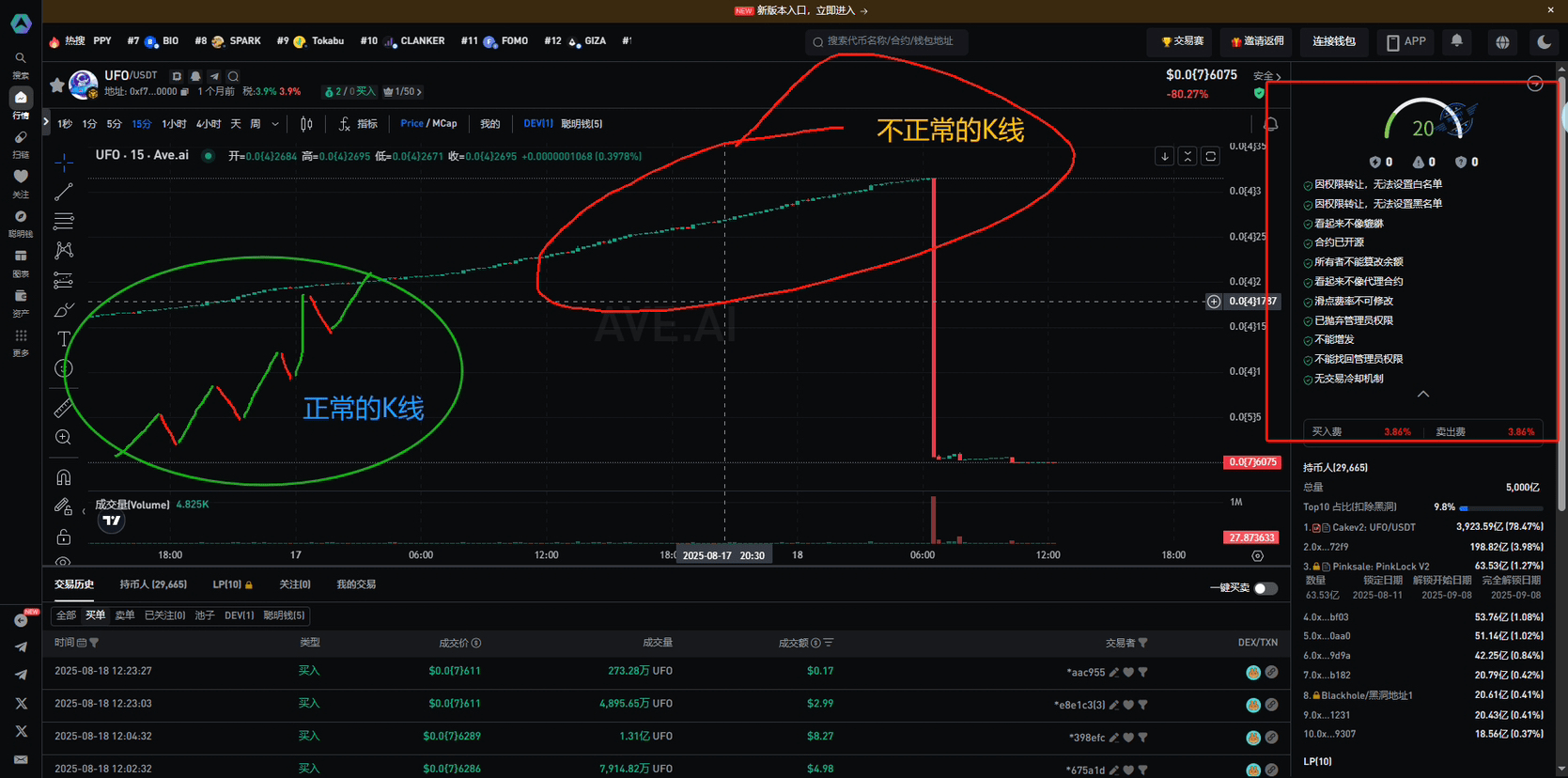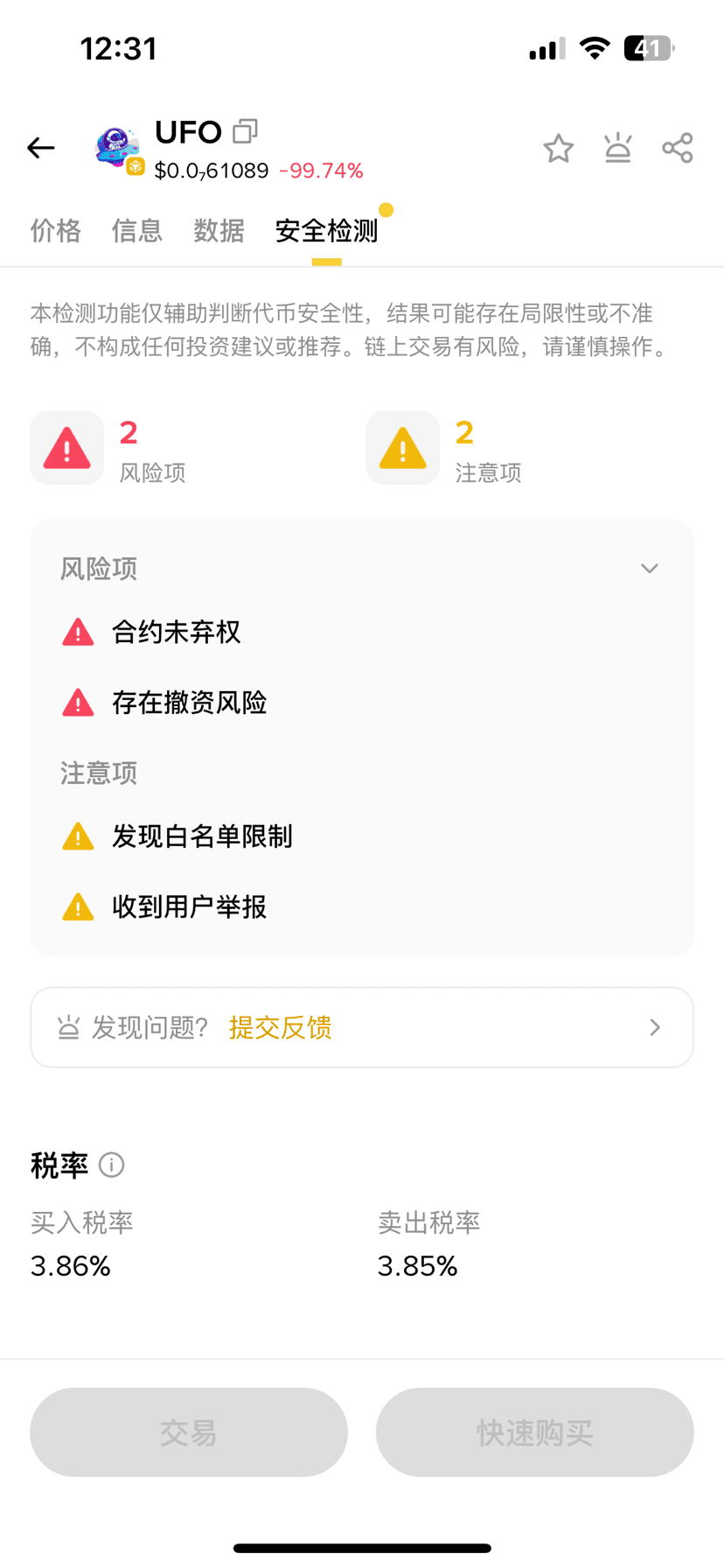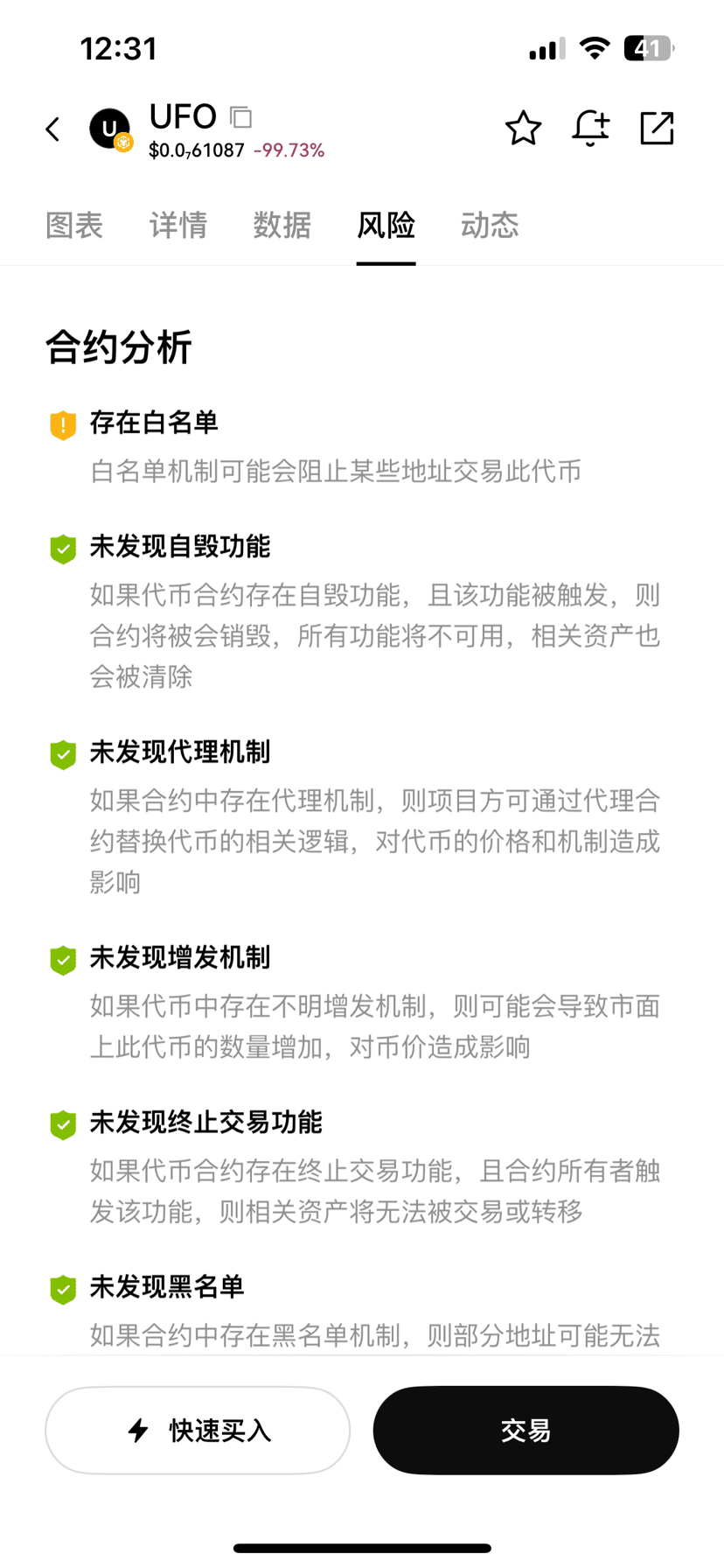
First of all, this trend looks like a Pixiu.
The correct trend should be:
Buy and sell, appearing in pairs.
Technically, it should account for at least 20%.
I know that those of you playing the primary market are driven by just two kinds of psychology.
I’ll just take my earnings and run.
I threw in 10 USD as a lottery ticket.
But I need to tell you;
Over 5,000 tokens are issued daily on-chain, but more than half of them die immediately (survive less than a day). This is still for projects that have a beginning and an end, not to mention those junk coins. Moreover, issuing a coin takes less than 5 minutes and costs less than 3 USD; this UFO coin hasn’t even lost its permissions and is still on the whitelist.
In other words:
Even if the coin you bought becomes popular, the project team has the authority to lock your coins, preventing you from trading.
That's how early Pepe was; you can still find it in the square now. He bought some Pepe on-chain early on, and after it exploded, the project team locked his coins, so he could only watch and not sell. It's now worth over 30 million dollars; this is just the first hurdle. The project team's insider trading made you doubt life, and there’s no telling how many insider trades happened with early Shib and Pepe. The project team made a killing.
Yet some people still hold onto the idea of buying lottery tickets with 10 USD.
10 USD is worth 70 yuan.
With 70 yuan, you can order a Big Mac meal at McDonald's and still have some change left.
70 yuan is enough for an average person to have breakfast for a week (steamed buns and soy milk).
With 70 yuan, you can buy enough groceries at the market to make a four-dish soup with meat and vegetables.
Or alternatively,
70 yuan is equivalent to half a day's wage for a frontline worker earning 13 per hour.
Enough for a delivery worker to run 20 orders, while in certain areas, sanitation workers only make 900 yuan a month.
If you spend 70 yuan, you can buy real, substantial things in real life: a hearty meal, a few books, or a trip. But if you throw it into a lottery on-chain, the chances are high that you’ll have nothing left by the next day, and the project team will still scold you for being foolish, forgetting the lessons, and next time they’ll just change the name and continue to exploit.
Lastly, let's talk about the Ave platform.


Comparing it to OK and Binance, both detected risks, but why didn’t Ave, a platform focused on the chain, detect anything?
Is its detection method more authoritative than that of leading exchanges?
Including the last massive imitation of MOCO.
Let’s untangle the timeline.
MOCO unexpectedly became popular - LP lock-up time mishap - billion-level imitation.
Who benefits the most from these events? The project team? Retail investors? Or the platform?
